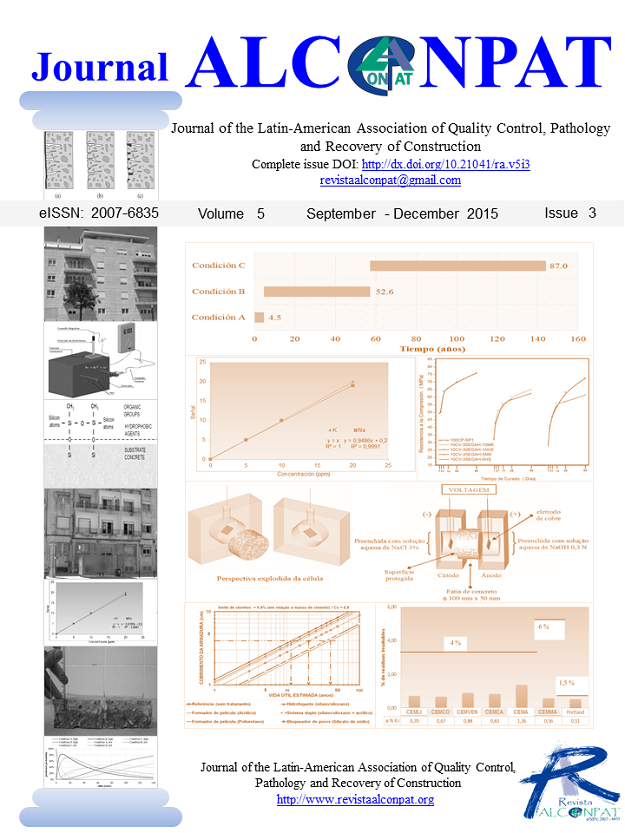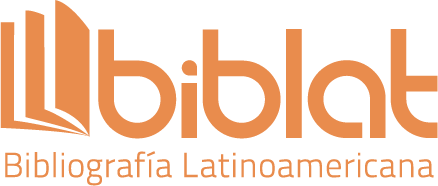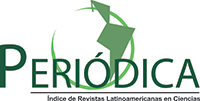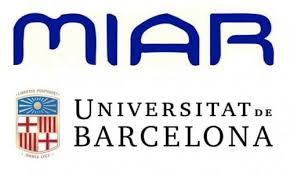Study on the hydration of Portland cement paste replaced with blast furnace slag, fly ash, and metakaolin: effect on the usage of two superplasticizer additives
DOI:
https://doi.org/10.21041/ra.v5i3.89Keywords:
Reactivity, Supplementary cementitious materialsAbstract
This research was focused on assessing the impact that different replacement materials and two superplasticizers on the development of the mechanical properties, phases formation and heat evolution of portland cement pastes, with replacement levels up to 60%. For this purpose, fly ash, ground granulated blast furnace slag, metakaolin and silica fume were used. The mixtures were manufactured with a water/solid of 0.4, 0.3% of superplasticizer and cured up to 60 days. Results showed that with the use of replacement materials, the calcium hydroxide content was reduced, due to the pozzolanic reaction, and the compressive strength was increased.
Keywords: Reactivity, supplementary cementitious materials.
Downloads
References
Ali M., Gözde I.N.S., Kambiz R., 2014. Comparison of fly ash, silica fume and metakaolin from mechanical properties and durability performance of mortar mixtures view point., Construction and Building Materials, 70: 17–25. DOI: https://doi.org/10.1016/j.conbuildmat.2014.07.089
Bentz D.P., Hansen A.S., Guynn J. M. (2011) “Optimization of cement and fly ash particle sizes to produce sustainable concretes”, Cement and Concrete Composites, 33, pp. 824–831. DOI: https://doi.org/10.1016/j.cemconcomp.2011.04.008
Caldarone M. A., Gruber K. A., Burg R.G. (1994) “High-reactivity metakaolin: a new generation minerals admixture”; Concrete International: design and construction, pp. 37-40.
CEMBUREAU (2014), The European Cement Association Activity Report.
Escalante García J. I. (1996); PhD thesis: The effect of temperature on the hydration of Portland cement and composite cement pastes; University of Sheffield.
Damtoft JS, Lukasik J, Herfort D, Sorrentino D, Gartner EM (2008) “Sustainable development and climate change initiatives”; Cement and Concrete Research, 38; pp. 115–127. DOI: https://doi.org/10.1016/j.cemconres.2007.09.008
Esteves L. P., Cachim P. B., Ferreira V. M. (2010) “Effect of fine aggregate on the rheology properties of high performance cement-silica systems”; Construction and Building Materials, 24, pp. 640-649. DOI: https://doi.org/10.1016/j.conbuildmat.2009.11.005
Gesoglu M., Guneyisi E., Özbay E. (2009) “Properties of self-compacting concretes made with binary, ternary, and quaternary cementitious blends of fly ash, blast furnace slag, and silica fume; Construction and Building Materials, 23, pp. 1847-1854. DOI: https://doi.org/10.1016/j.conbuildmat.2008.09.015
Golapan M. K. (1993) “Nucleation and pozzolanic factors in strength development of class F fly ahs concrete”; ACI Materials Journal, pp. 117-121.
Gutteridge W. A., Dalziel J. A. (1990) “The effect of a secondary component on the hydration of Portland cement, Part II: Fine hydraulic binders”; Cement and Concrete Research, 20, pp. 853-861. DOI: https://doi.org/10.1016/0008-8846(90)90046-Z
Haha M. B, Saout G. Le, Winnefeld F., Lothenbach B. (2011) “Influence of activator type on hydration kinetics, hydrate assemblage and microstructural development of alkali activated blast furnace slags”; Cement and Concrete Research, 41, pp. 301-310. DOI: https://doi.org/10.1016/j.cemconres.2010.11.016
Hwang C. L., Shen D. H. (1991) “The effects of Blastfurnace slag and fly ash on the hydration of Portland cement”; Cement and Concrete Research, 21, pp. 410-425. DOI: https://doi.org/10.1016/0008-8846(91)90090-5
Isaia G. C., Gastaldini A.L.G:, Morales R., (2003) “Physical and pozzolanic action of mineral additions on the mechanical strength of high performance concrete”; Cement and Concrete Composites Vol. 25, pp. 69-76. DOI: https://doi.org/10.1016/S0958-9465(01)00057-9
Janotka I., Puertas F., Palacios M., Kuliffayová M., Varga C. (2010) “Metakaolin sand-blended-cement pastes: Rheology, hydration process and mechanical properties”; Construction and Building Materials, 24, pp. 791-802. DOI: https://doi.org/10.1016/j.conbuildmat.2009.10.028
Juenger M.C.G., Siddique R. (2015) “Recent advances in understanding the role of supplementary cementitious materials in concrete”, Cement and Concrete Research 78, pp. 71–80 DOI: https://doi.org/10.1016/j.cemconres.2015.03.018
Khatib J. M., Sabir B. B., Wild S. (1996) “Pore size distribution of metakaolin paste”; Cement and Concrete Research,. 26, pp. 1545-1553. DOI: https://doi.org/10.1016/0008-8846(96)00147-0
Langan B. W., Weng K., Ward M. A. (2002) “Effect of silica fume and fly ash on heat of hydration of Portland cement”; Cement and Concrete research, 32, pp. 1045-1051. DOI: https://doi.org/10.1016/S0008-8846(02)00742-1
Lothenbach B., Winnefeld F., Figi R. (2007) “The influence of superplasticizers on the hydration of Portland cement”; Empa, Dübendorf, Switzerland.
Mansour S. M., Abadlia M. T., Bekkour K. (2010) “Improvement of Rheological Behaviour of Cement Pastes by Incorporating Metakaolin”; European Journal of Scientific Research, 42, pp. 428-438.
Martínez-Alvarado M. J; (2009); Tesis: Estudio de la hidratación de la escoria granulada de alto horno (EGAH) a diferentes temperaturas; Maestría en Ciencias en Ingeniería Metalúrgica; Escuela Superior de Ingenierías e Industrias Extractivas; Instituto Politécnico Nacional, México, D.F.
Meredith P., Donald A.M. Meller N., Hall C. (2004) “Tricalcium aluminate hydration: microestructural observations by in-situ electron microscopy”; Journal of Materials Science 39, pp. 997-1005. DOI: https://doi.org/10.1023/B:JMSC.0000012933.74548.36
Mollah M. Y. A., Adams W. J., Schennach R., Cocke D. L. (2000) “A review of cement – superplasticizers interactions and their models”; Advances in Cement Research 12, pp. 153-161. DOI: https://doi.org/10.1680/adcr.2000.12.4.153
Ping D., Zhonghe S., Wei C. , Chunhua S., 2013. Effects of metakaolin, silica fume and slag on pore structure, interfacial transition zone and compressive strength of concrete., Construction and Building Materials, 44: 1–6. DOI: https://doi.org/10.1016/j.conbuildmat.2013.02.075
Plank J., Dai Z., Andres P.R. (2006), “Preparation and characterization of new Ca-Al-polycarboxilate layered double hydroxides”; Materials Letters 60; pp. 3614-3617. DOI: https://doi.org/10.1016/j.matlet.2006.03.070
Plank J., Zhimin D., Keller H., Hössle F. V., Seidl W. (2010) “Fundamental mechanisms for polycarbozylate intercalation into C3A hydrate phases and the role of sulfate present in cement”; Cement and Concrete Research, 40. pp. 45-57. DOI: https://doi.org/10.1016/j.cemconres.2009.08.013
Roy D. M., Arjunan P., Silsbee M. R. (2001) “Effect of silica fume, metakaolin, and low-calcium fly ash on chemical resistance of concrete”; Cement and Concrete Research, 31, pp. 1809-1813. DOI: https://doi.org/10.1016/S0008-8846(01)00548-8
Schneider M, Romer M, Tschudin M, Bolio H. (2011), “Sustainable cement production at present and future”, Cement and Concrete Research; 41, pp. 642–650. DOI: https://doi.org/10.1016/j.cemconres.2011.03.019
Schöler A. , Lothenbach B., Winnefeld F., Zajac M. (2015) “Hydration of quaternary Portland cement blends containing blast-furnace slag, siliceous fly ash and limestone poder” Cement and Concrete Composites, 55, pp.374–382. DOI: https://doi.org/10.1016/j.cemconcomp.2014.10.001
Sharfuddin A., Obada K., Wendy A., 2008. Chloride penetration in binary and ternary blended cement concretes asmeasured by two different rapid methods ., Cement and Concrete Composite, 30:576–582 DOI: https://doi.org/10.1016/j.cemconcomp.2008.02.005
Slanicka S. (1999) “The influence of fly ash fineness on the strength of concrete”; Cement and Concrete Research, 21, pp. 285-96. DOI: https://doi.org/10.1016/0008-8846(91)90010-F
Snelson D.G., Wild S., O’Farrel M. (2008), “Heat of hydration of Portland Cement-Metakaolin-Fly ash (PC-MK-PFA) blends”; Cement and Concrete Research, Vol. 38, pp. 832-840. DOI: https://doi.org/10.1016/j.cemconres.2008.01.004
Talero R. (2005), “Performance of metakaolin and Portland cements in ettringite formation as determined by ASTM C 452-68: kinetic and morphological differences”; Cement and Concrete Research,. 35, pp. 1269-1284. DOI: https://doi.org/10.1016/j.cemconres.2004.10.002
Talero R., Rahhal V. (2009); “Calorimetric comparison of portland cements containing silica fume and metakaolin”; Journal of Thermal Analysis and Calorimetry, 96, pp. 383-393. DOI: https://doi.org/10.1007/s10973-008-9096-x
Yun G., Geert De S., Guang Y., Zhuqing Y., Zhijun T., Kai W., 2013, A microscopic study on ternary blended cement based composites. Construction and Building Materials, 46: 28–38. DOI: https://doi.org/10.1016/j.conbuildmat.2013.04.021
Wild S., Khatib J.M., Jones A. (1996) “Relative strength pozzolanic activity and cement hydration in superplasticised metakaolin concrete”; Cement and Concrete Research. 26; pp. 1537-1544. DOI: https://doi.org/10.1016/0008-8846(96)00148-2
Winnefeld F., Becker S., Pakusch J., Götz T. (2007) “Effects of the molecular architecture of comb- shaped superplasticizers on their performance in cementitious systems”, Cement and Concrete Composites, 29, pp. 251-262. DOI: https://doi.org/10.1016/j.cemconcomp.2006.12.006
Published
How to Cite
Issue
Section
License
_______________________________
License in effect from September 2020
You are free to:
- Share — copy and redistribute the material in any medium or format for any purpose, even commercially.
- Adapt — remix, transform, and build upon the material for any purpose, even commercially.
- The licensor cannot revoke these freedoms as long as you follow the license terms.
Under the following terms:
- Attribution — You must give appropriate credit , provide a link to the license, and indicate if changes were made . You may do so in any reasonable manner, but not in any way that suggests the licensor endorses you or your use.
- No additional restrictions — You may not apply legal terms or technological measures that legally restrict others from doing anything the license permits.
Notices:
You do not have to comply with the license for elements of the material in the public domain or where your use is permitted by an applicable exception or limitation .
No warranties are given. The license may not give you all of the permissions necessary for your intended use. For example, other rights such as publicity, privacy, or moral rights may limit how you use the material.





















.png)














